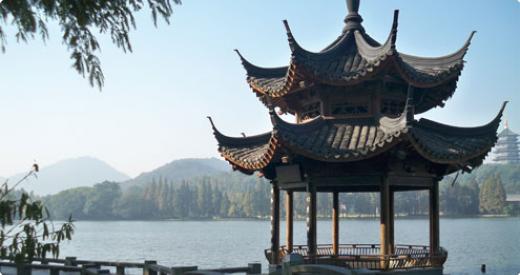
Population 5.2 million
Cuisine Zhejiang style cooking, one of the eight major Chinese cuisines, which features many fresh seafood, bamboo shoots and fairly light meat dishes. Hangzhou cuisines is characterised by its light, fresh and layered flavours that have subtlety and balance.
Signature Dishes Beggar’s chicken (an entire chicken cooked in a ball of mud), West Lake fish (vinegar coated fish from the West Lake), Dongpo braised pork (braised pork belly), Fried shrimp with Longjing tea leaves
Wine Culture One of the fastest growing cities in China for fine wine, growing in the double digits every year.
Wine Duty Approximately 48%
Intrepid traveller Marco Polo, during his travels in ancient China, was said to have called the city of Hangzhou as “beyond dispute the finest and the noblest in the world.” Established more than 2,000 years ago, the construction of the Grand Canal during the Sui dynasty (581-618AD) linking Hangzhou with Beijing made Hangzhou a core economic city of the Yangtze River Delta, hence its given name, meaning “River-ferrying Prefecture”.
Renowned for its beautiful natural scenery, Hangzhou’s famous West Lake has had numerous philosophers, politicians, and calligraphers in Chinese history flocking to its shores. Iconic Chinese poet Bai Juyi wrote, “I most love the east of the lake, I cannot come often enough/ Within the shade of green poplars on the white sand embankment.” As the birthplace of the precious green tea Longjing , one can even order a dish of stir-fried shrimps with Longjing tea leaves. This is one of the signature dishes of Hangzhou since the 17th century, when Emperor Chien Long became hungry and his cook mistakenly sprinkled the tealeaves in instead of herbs.
Due to its key position for trade, Hangzhou has had a strong Arab, Jewish and Muslim community mixing with the local population. The Arab community settled in the 12th and 13th centuries while the city was an important sea trading post. Their descendants, who intermarried amongst the local Han population, are now called Hui. The Middle Eastern influence can be seen in the many halal restaurants available even nowadays in modern times. Gaoyin Street, for example, features many takeaway booths, offering the staple doner , fresh naan bread and lamb skewers. Dishes incorporating the local palate into the dishes can be seen in spring rolls stuffed with cheese and parsley and Arabic shrimp rice.
Hangzhou became one of China’s major economic centres during its golden age as the capital of the Southern Song dynasty from 1127 to 1279, opening up the city as the maritime alternative to the Silk Road. Industries flourished, and Hangzhou became famous for crafts such as silk even until today. The streets and boulevards of Xinhua and Jiankang, showcasing all 14 categories of silk, make up the largest wholesale and retail silk market in China. The silk trade is heavily endorsed by the government, boasting the largest silk museum in the world complete with a dying and weaving hall and full historical coverage of silk production, silk research and silk trade from olden times.
With more than 350 state research institutes and a multi-structured educational system, Hangzhou is a unique culinary capital that is a haven for academics, artistic souls and of course food lovers.









